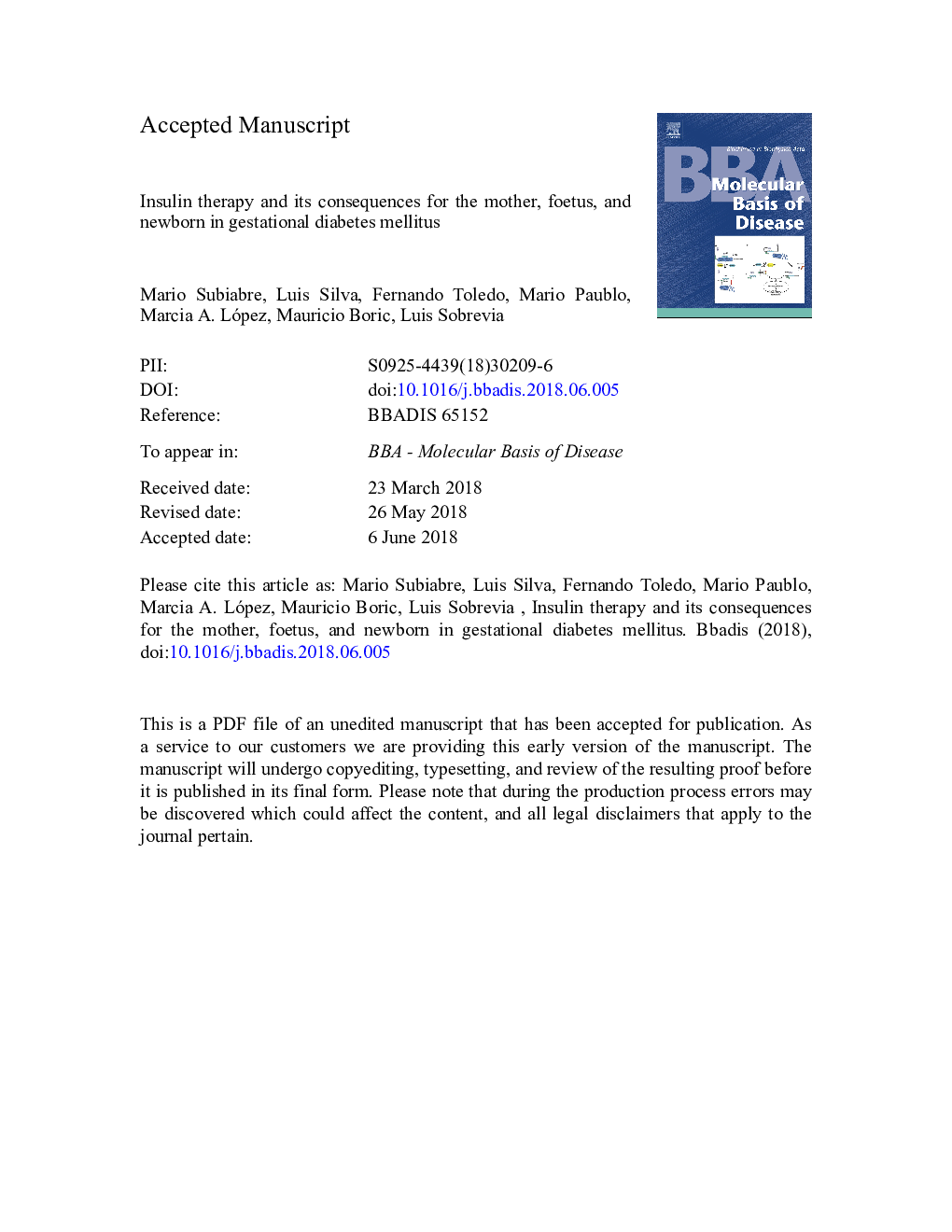| Article ID | Journal | Published Year | Pages | File Type |
|---|---|---|---|---|
| 8258349 | Biochimica et Biophysica Acta (BBA) - Molecular Basis of Disease | 2018 | 39 Pages |
Abstract
Gestational diabetes mellitus (GDM) is a disease characterised by glucose intolerance and first diagnosed in pregnancy. This condition relates to an anomalous placental environment and aberrant placental vascular function. GDM-associated hyperglycaemia changes the placenta structure leading to abnormal development and functionality of this vital organ. Aiming to avoid the GDM-hyperglycaemia and its deleterious consequences in the mother, the foetus and newborn, women with GDM are firstly treated with a controlled diet therapy; however, some of the women fail to reach the recommended glycaemia values and therefore they are passed to the second line of treatment, i.e., insulin therapy. The several protocols available in the literature regarding insulin therapy are variable and not a clear consensus is yet reached. Insulin therapy restores maternal glycaemia, but this beneficial effect is not reflected in the foetus and newborn metabolism, suggesting that other factors than d-glucose may be involved in the pathophysiology of GDM. Worryingly, insulin therapy may cause alterations in the placenta and umbilical vessels as well as the foetus and newborn additional to those seen in pregnant women with GDM treated with diet. In this review, we summarised the variable information regarding indications and protocols for administration of the insulin therapy and the possible outcomes on the function and structure of the foetoplacental unit and the neonate parameters from women with GDM.
Related Topics
Life Sciences
Biochemistry, Genetics and Molecular Biology
Ageing
Authors
Mario Subiabre, Luis Silva, Fernando Toledo, Mario Paublo, Marcia A. López, Mauricio P. Boric, Luis Sobrevia,
